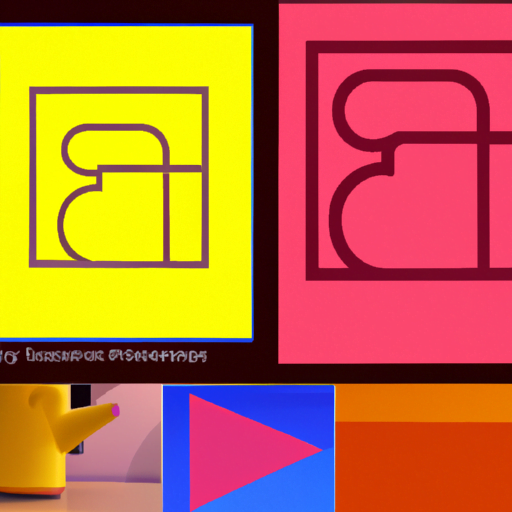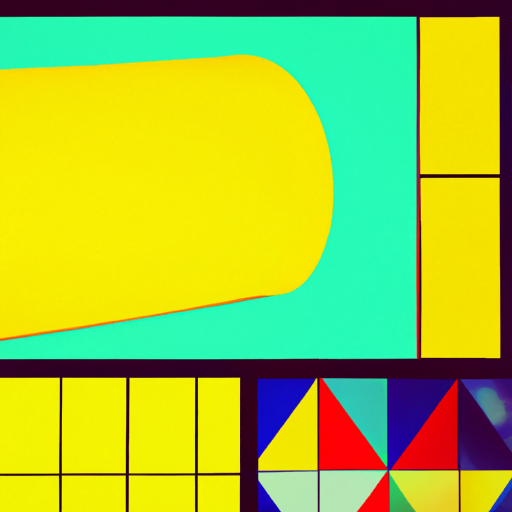
-
Table of Contents
- The Psychology of Shapes in Graphic Design
- The Influence of Shapes on Perception
- 1. Circles
- 2. Squares and Rectangles
- 3. Triangles
- 4. Curved Lines
- The Use of Shapes in Graphic Design
- 1. Branding and Logos
- 2. User Interface Design
- 3. Advertising and Marketing
- Case Studies: The Power of Shapes in Graphic Design
- 1. Nike’s Swoosh
- 2. Apple’s Logo
- 3. FedEx’s Arrow
- The Impact of Color and Shape Combination
- 1. Red Triangle
- 2. Blue Circle
- 3. Yellow Square
- Summary
The Psychology of Shapes in Graphic Design

Graphic design is a powerful tool that can evoke emotions, convey messages, and influence perceptions. One of the key elements in graphic design is the use of shapes. Shapes have a profound impact on how we perceive and interpret visual information. In this article, we will explore the psychology of shapes in graphic design and how they can be used to create compelling and effective designs.
The Influence of Shapes on Perception
Shapes play a crucial role in how we perceive and interpret the world around us. They have the ability to communicate meaning and evoke specific emotions. Different shapes have different psychological associations, and understanding these associations can help designers create designs that effectively communicate their intended message.
1. Circles
Circles are often associated with unity, harmony, and completeness. They have no sharp edges or corners, which gives them a sense of softness and gentleness. Circles can evoke feelings of comfort, safety, and inclusiveness. They are commonly used to represent community, friendship, and love. For example, the logo of social media giant Facebook features a blue circle, which symbolizes connection and unity.
2. Squares and Rectangles
Squares and rectangles are associated with stability, balance, and reliability. They have equal sides and right angles, which give them a sense of order and structure. Squares and rectangles are often used to represent professionalism, trustworthiness, and solidity. Many corporate logos, such as those of Microsoft and IBM, feature square or rectangular shapes to convey a sense of stability and reliability.
3. Triangles
Triangles are dynamic and energetic shapes. They can convey a sense of movement, direction, and power. Depending on their orientation, triangles can evoke different emotions. An upward-pointing triangle can represent growth, progress, and ambition, while a downward-pointing triangle can symbolize stability, foundation, and balance. The logo of the Mercedes-Benz car company features an upward-pointing triangle, which represents their ambition and drive for excellence.
4. Curved Lines
Curved lines are often associated with fluidity, grace, and femininity. They can create a sense of movement and flow. Curved lines are commonly used in designs that aim to evoke emotions such as joy, happiness, and relaxation. For example, the logo of the Coca-Cola company features a curved line that represents the flow of their iconic beverage.
The Use of Shapes in Graphic Design
Understanding the psychological associations of shapes allows designers to strategically use them in their designs to convey specific messages and evoke desired emotions. Here are some examples of how shapes are used in graphic design:
1. Branding and Logos
Shapes play a crucial role in branding and logo design. Companies carefully choose shapes that align with their brand values and desired perception. For example, a technology company may use square or rectangular shapes to convey reliability and professionalism, while a fashion brand may use curved lines to evoke elegance and sophistication. The shape of a logo can instantly communicate the essence of a brand and create a lasting impression on consumers.
2. User Interface Design
Shapes are also used in user interface design to guide users and create intuitive experiences. For example, buttons with rounded corners are often perceived as more friendly and approachable, while buttons with sharp corners can convey a sense of seriousness or urgency. The strategic use of shapes in user interface design can enhance usability and improve the overall user experience.
3. Advertising and Marketing
In advertising and marketing, shapes are used to capture attention and convey messages. For example, a sale sign with a bold, triangular shape can create a sense of urgency and encourage customers to take immediate action. Shapes can also be used to create visual hierarchy and draw attention to specific elements in a design. The strategic use of shapes in advertising and marketing can significantly impact the effectiveness of a campaign.
Case Studies: The Power of Shapes in Graphic Design
Several case studies demonstrate the power of shapes in graphic design. Let’s explore a few examples:
1. Nike’s Swoosh
The Nike logo, known as the “swoosh,” is a simple yet powerful example of the use of shapes in graphic design. The swoosh is a curved line that represents movement and speed. It conveys a sense of energy and athleticism, aligning perfectly with Nike’s brand values. The simplicity and versatility of the swoosh have made it one of the most recognizable logos in the world.
2. Apple’s Logo
Apple’s logo is another iconic example of the use of shapes in graphic design. The logo features a bitten apple, which is a simple and memorable shape. The rounded edges of the apple create a sense of approachability and friendliness, while the bite adds a touch of playfulness. The Apple logo has become synonymous with innovation and quality.
3. FedEx’s Arrow
The FedEx logo incorporates a hidden arrow between the letters “E” and “x.” The arrow is formed by the negative space, creating a clever and subtle use of shapes. The arrow represents speed, precision, and forward movement, aligning perfectly with FedEx’s brand values as a reliable and efficient delivery service.
The Impact of Color and Shape Combination
While shapes alone have psychological associations, their impact can be further enhanced or altered when combined with color. Color and shape combinations can create powerful visual messages and evoke specific emotions. Here are a few examples:
1. Red Triangle
A red triangle can evoke a sense of danger, urgency, and excitement. The combination of the energetic shape of a triangle with the intense color red creates a powerful visual message that demands attention. This combination is often used in warning signs and alerts.
2. Blue Circle
A blue circle can evoke a sense of calmness, trust, and reliability. The combination of the soft shape of a circle with the cool color blue creates a soothing and comforting visual message. This combination is often used in healthcare and financial institutions to convey a sense of trust and security.
3. Yellow Square
A yellow square can evoke a sense of happiness, optimism, and creativity. The combination of the stable shape of a square with the vibrant color yellow creates a visually stimulating and energetic message. This combination is often used in designs related to children, entertainment, and innovation.
Summary
The psychology of shapes in graphic design is a fascinating field that offers valuable insights into how shapes can be used to create compelling and effective designs. Understanding the psychological associations of shapes allows designers to strategically use them to convey specific messages and evoke desired emotions. Shapes play a crucial
